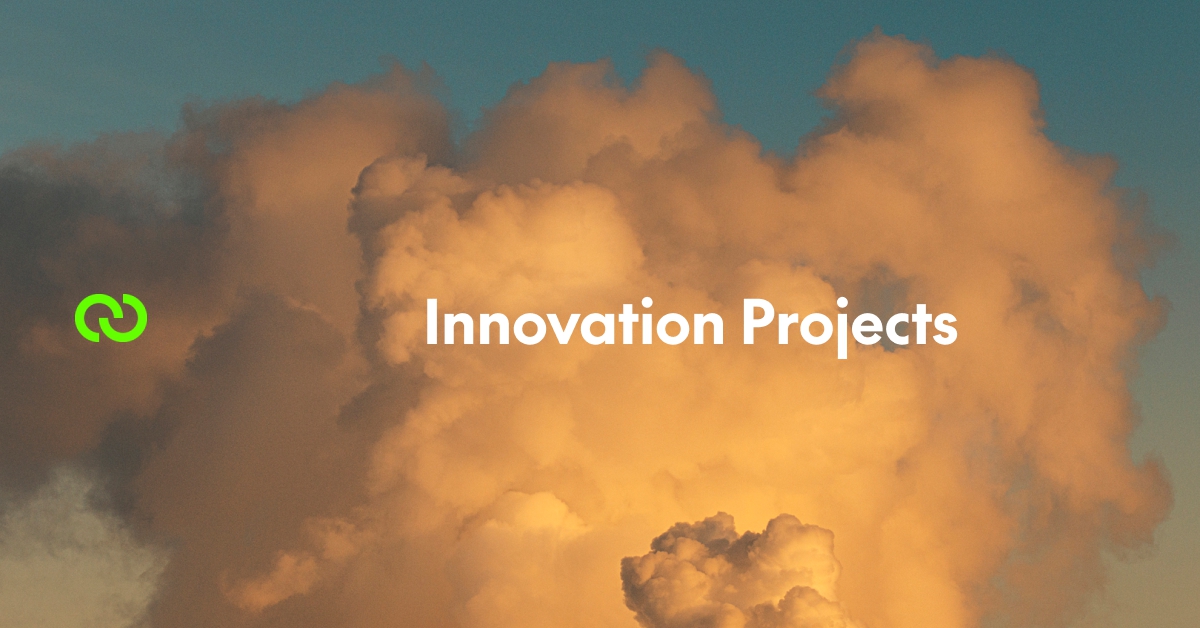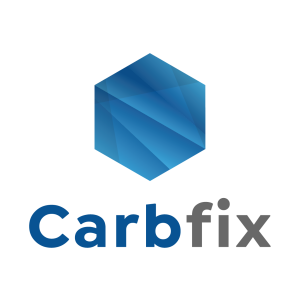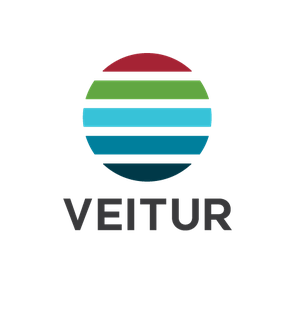Reykjavík Energy Innovation

Reykjavík Energy: Pioneering Innovation in Sustainable Energy Solutions
For over a century, Reykjavík Energy has been at the forefront of innovation in providing Icelanders with clean, sustainable energy solutions. Our journey of pioneering began in 1909 with the provision of clean, cold water, setting the foundation for a future driven by innovation and sustainability. In 1921, we ventured into electric production, marking the start of a transformative era.
Throughout the past century, our relentless pursuit of innovation has led to the expansion of our services to include geothermal heating and electricity, advanced water production, sewage management, fibre optics, EV infrastructure, and groundbreaking carbon storage solutions. Each step in our journey reflects our commitment to harnessing cutting-edge technology and sustainable practices to meet the evolving needs of society.
The Reykjavík Energy family comprises esteemed entities such as Carbfix, ON Power, Veitur Utilities, Reykjavik Fibre Optics, and Elliðaárstöð, each playing a pivotal role in driving forward our mission of innovation and sustainability. Through these entities, we continue to lead the way in developing and implementing innovative solutions that ensure a cleaner, greener future for all.
Reykjavík Energy
Reykjavík Energy (Orkuveitan) is the parent company of Veitur, Orka náttúrunnar, Ljósleiðarinn and Carbfix. We support a growing society, homes and business life with innovation in energy, utilities and carbon fixation. We enable a sustainable future.

Orkuveitan - Carbon-neutral Hellisheidi and Nesjavellir Power Plants
Project information:
Reykjavík Energy aims for carbon neutrality by 2030. To achieve this, nearly all carbon dioxide in the processing chain of ON Power's power plants must be removed. The primary purpose of the first stages of the abatement unit at Hellisheidi Power Plant was to reduce H2S emissions, which also allowed for a reduction in carbon dioxide emissions from the plant.
Analyses based on the operation of the abatement unit since 2014 show that the same technology can be used to further reduce carbon dioxide emissions from the plant by up to 95%, sequester it in rock, and/or utilize it for value creation. Moreover, nearly all H2S can be removed and sequestered in rock. In 2021, a grant of 600 million ISK was received for the Silverstone project from the Innovation Fund, the European Union's innovation fund, to build this abatement unit. It is expected to be operational by 2025. An experimental abatement unit at Nesjavellir Power Plant is already in operation, with plans for 95% carbon dioxide injection by 2030.
Orkuveitan - Carbon capture from the atmosphere at Hellisheidi
Project information:
Carbfix and ON Power continue their collaboration with the Swiss company Climeworks, which specializes in capturing carbon dioxide from the atmosphere. This is a large-scale project based on experience from a pilot project on integrating atmospheric carbon dioxide capture and mineralization that has been ongoing at Hellisheidi Power Plant since 2017. This project was part of the Carbfix2 project, supported by the EU's H2020 research and innovation program. In 2021, the first of its kind direct air capture plant (Orca) was launched in the ON Power‘s Geothermal Park.
In 2022, construction began on the Mammoth direct air capture plant in the Geothermal Park, in collaboration with Carbfix and ON Power, which will increase the current capacity for capturing and storing atmospheric carbon dioxide tenfold in the area. The new facility is expected to be operational in 2024. The ongoing development and expansion of the project will contribute to keeping global warming within the limits of the Paris Agreement.
Collaborators:
Climeworks
Orkuveitan - Experiments to sequester CO2 in geological formations with seawater in Helguvík
Project information:
Carbfix began experiments in Helguvík in 2023 using seawater to sequester CO2 in geological formations. The project, named CO2SeaStone, is a collaborative effort between Carbfix and ETH Zurich, the University of Iceland, ÍSOR, the universities of Geneva and Lausanne, and University College London. The project is part of a larger development project, DemoUpCARMA, led by ETH Zurich, which aims to test and develop various technological solutions for capturing, utilizing, transporting, and disposing of CO2 from Switzerland, either to achieve negative emissions or to reduce them by capturing from industries that struggle to reduce their emissions.
Among the solutions DemoUpCARMA is exploring capturing CO2 from industry, transporting it to Rotterdam, and from there by ship to Iceland, where it will be dissolved in seawater for injection and mineralization using the Carbfix method. The first containers from Switzerland arrived to Iceland in 2022. The project is funded by Eurostars, Rannís, and the Swiss government's energy and environmental offices. Reykjanesbær participates in the project by providing Carbfix with facilities in Helguvík. Samskip supports the project by transporting CO2 in containers from Rotterdam to Iceland.
Collaborators:
ETH Zurich, University of Iceland, ÍSOR, University of Geneva, University of Lausanne, University College London.
Orkuveitan - Energy transition in transportation in Iceland
Project information:
The "Better Charging" project is part of a larger European research project, SPARCS, in which Reykjavík Energy, along with ON Power, Veitur Utilities, and the City of Reykjavík, are participants. It is supported by the European Union's innovation fund, Horizon 2020, and the "Better Charging" project is partially funded by the grant. The research in Iceland will provide valuable insights into how electric vehicle owners charge and use their cars and provide important information for large-scale load management.
Better Charging will test different methods for load management with electric vehicle owners over a two-year period, which can be divided into two main categories: methods based on changes to the tariff and methods based on direct control of charging power. Read more here: Hlöðum betur
Collaborators:
Reykjavík, Espoo, Leipzig, Kifissia, Kladno, Lviv, Maia
Contact:
Lilja Tryggvadóttir
Orkuveitan - Deep drilling
Project information:
Deep drilling is a project aimed at drilling deeper into the geothermal systems on high-temperature fields – into their roots, that is. The goal is to develop methods to extract geothermal energy from these deep hot strata and thereby expand the exploitable geothermal system downwards. Technical challenges still need to be resolved to make this feasible. Reykjavík Energy and ON Power are participants in several grant projects funded by the European Union (GeoPRO, HotCase, GeConnect, COMPASS) and the Geothermica fund (HEATSTORE, DEEPEN) aimed at addressing these challenges.
As part of the DEEPEN project, 500 seismometers along with three fiber optic cables were used for measurements in the summer of 2021 – the largest number of seismometers ever used for measurements in Iceland. The third deep drilling hole in Iceland, IDDP-3, is planned to be drilled in the Hengill area over the next five years in collaboration with other energy companies, and preparations for this project have begun.
Collaborators:
Landsvirkjun, HS Orka, ÍSOR, University of Iceland, Equinor, Orkustofnun, Stiftelsen Norsar, NREL, Lawrence Berkeley National Laboratory, IFP Energies Nouvelles, GFZ, ETH, Georg, Hornet, Sintef, Curistec, Cosvig, TVS, TWI
Contact:
Pálmar Sigurðsson
Orkuveitan - Improved resource utilization in high-temperature areas for the future with water mixing in the district heating of the capital area
Project information:
In 2018, a research project started with the aim at merging the district heating systems of the capital area. The system is divided into two parts; one with heated groundwater from ON Power‘s geothermal power plants and the other with low-temperature water from Veitur Utilities. These two types of water cannot be mixed due to the formation of precipitations. The goal is to modify the hot water processing at ON Power's plants so that water can be produced that can be mixed with the low-temperature water in the distribution system of the Capital's district heating without forming precipitations.
Additionally, the project will increase the maximum power from the current exploited resources, increase the efficiency of the plants' thermal production, which results in less resource waste along with reducing environmental impacts. Research looks promising and has already been useful for water exchanges and summer rest of low-temperature fields in the Capital region. Work is underway on developing a system at the scale of 10 l/s to prove the functionality of a comparable system at full scale these days. The pilot system is expected to be operational in the summer of 2024 and the trials in the system to be completed by the summer of 2025.
Collaborators:
Royal Haskoning DHV, COWI
Contact:
Baldur Brynjarsson
Orkuveitan - Utilization of wastewater
Project information:
A significant amount of waste is generated by Veitur Utilities from the sewage that the wastewater treatment receives from customers. Part of this waste is energy-rich and can be rich in nutrients etc. It has been landfilled, resulting in the emissions of greenhouse gases and the waste of valuable resources. Veitur Utilities aims to reduce this landfilling, especially the part that is biodegradable. The wastewater utility is preparing for the reuse of wastewater waste such as sand, sludge, fat, and screen waste, as landfilling. Wasting these values is outdated and not in the spirit of implementing a circular economy.
A contract was concluded with the sludge reception at Flúdir for the reception of sludge from Veitur Utilities biological treatment plants in Borgarbyggd Municipality.
Work on assessing the feasibility of reusing sand from sewage treatment plants began at the beginning of 2022 and was completed in 2023. The results of this work are available in a report on Veitur Utilities website and will be used in decision-making in these matters.
Veitur, in collaboration with the engineering firm EFLA, has been working hard to prepare for a tender on the reception of fat from wastewater treatment plants. Such a service was not available on the market, and Veitur Utilities therefore resorted to an innovation-driven tendering process, as described in the project status report (IS) published in 2023 and available on Veitur Utilities' website. Veitur Utility sincerely hopes that the intensive dialogue they have cultivated with the market and stakeholders in waste matters will result in bids for the service, despite the need for development by the bidders with the associated capital costs.
Contact:
Hlöðver Stefánsson
Carbfix
In late 2019, Carbfix was established as a subsidiary within Reykjavík Energy. The aim of establishing a special company around the carbon mineralization process, developed at Reykjavík Energy, was, among other things, to further promote Carbfix' utilization and thereby improving performance in climate affairs.

Carbfix- Project Silverstone
Project information:
Project Silverstone, an innovative EU-funded project, will deploy full-scale CO2 capture, injection, and mineral storage at the Hellisheiði ON Power plant, reaching world's first near-zero carbon footprint geothermal power plant.
The Carbfix capture and injection demonstration plant has been operational at Hellisheiði since 2014 injecting about 12,000 tons of CO2 annually. With the addition of the Silverstone project, 34,000 tons of CO2 will be captured and injected annually. Project Silverstone is expected to reduce emissions by 150,000 tons of CO2 over the project lifetime. This project alone will deliver 10% of Iceland's Climate Action Plan calls for by 2030 within the energy and industrial sectors not covered by the EU ETS. Through the project, a new CO2-optimised capture plant will be constructed resulting in 150,000 tons of CO2 being mineralized.
Read more about Project Silverstone here: https://www.carbfix.com/project-silverstone
Collaborators:
University of Iceland, CNRS Toulouse, Columbia University
Carbfix - Coda Terminal in Straumsvík
Project information:
A scalable onshore CO₂ mineral storage hub in Iceland.
In 2022, Carbfix received a 16 billion grant from the European Union's innovation fund for the construction of the Coda Terminal (the Soda Station) in Straumsvík. The center will be the first of its kind in the world. Exploratory drilling began in the area in 2022, with the first phase of operations expected to start there in 2027 and reach full capacity by 2032. An environmental impact assessment for the construction began in 2022. In December 2022, a letter of intent for the development of the Coda Terminal was signed between Carbfix, Coda Terminal, the municipality of Hafnarfjördur, and Rio Tinto in Iceland.
The world's climate goals will not be achieved without a significant reduction in carbon dioxide (CO₂) emissions. Coda Terminal will be the world’s first CO₂ mineral storage hub at Straumsvík, Iceland. The CO₂ will be transported to Iceland from elsewhere in Europe, and Coda will also be able to store CO₂ captured from local industries or directly from the atmosphere. By 2032 Coda Terminal will be able to mineralize 3 million tons of CO₂ per year, which amounts to more than half of Iceland's annual CO₂ emissions.
Our mission to significantly contribute to climate recovery through worldwide scaling and further development of underground CO₂ mineral storage. Read more here: https://www.carbfix.com/codaterminal.
Veitur
Veitur Utilities ohf. was created when Reykjavík Energy was unbundled at the beginning of 2014. Veitur Utilities is the biggest utility company in Iceland. Three quarters of the population use the company’s district heating, about half the population are connected to its electricity grid and four out of ten of Icelanders use the water utilities and sewerage systems of Veitur Utilities.

Veitur - Innovation in a crisis, plastic silencers in a time of supply shortage
Project Information:
In Hveragerði, many boreholes are over 100°C hot and Artesian, and we harness both the steam and water. However, we need to release steam to the atmosphere, which produces significant noise. To address the noise issue from the wells, we have typically used steel silencers. However, during the challenging times of COVID-19, when supply chains were strained, an innovative idea emerged to explore the use of plastic from a domestic supplier. The domestic supplier SET, even though skeptical at first, came through, resulting in a plastic silencer that is cheaper, quieter, safer, locally sourced, and has better durability.
Partners:
Set
Contact:
Haukur Þorvaldsson, haukur.thorvaldsson@veitur.is
Veitur - Digital Twin for the District Heating System
Project Information:
Veitur is developing a digital twin for Reykjavik's district heating system to optimize performance, predict and prevent failures, and enhance sustainability. By integrating data from strategically placed pressure meters and smart meters, we aim to monitor system health, collect real-time data, and provide early warnings of potential issues. This digital twin will enable real-time monitoring and control, improved predictive maintenance, and better energy management. Ultimately, it will enhance customer service by providing detailed insights into energy usage and empowering customers to adopt energy-saving practices, contributing to a more efficient and sustainable heating network.
Partners:
Fluidit Oy
Contact:
Sigríður Sigurðardóttir, sigridur.sigurdardottir@veitur.is
Veitur - Real-time monitoring of water quality
Project Information:
Veitur has implemented the BactoSense system in Heiðmörk, Reykjavík, to enhance water quality monitoring and safety. This fully automated, online flow cytometer allows for real-time bacterial analysis, providing results in just 20 minutes. By continuously monitoring microbial parameters, BactoSense ensures prompt detection of bacterial contamination, safeguarding the water supply from potential threats.
Partners:
Applied Process Technology
Contact:
Sverrir Guðmundsson, sverrir.gudmundsson@veitur.is
Veitur - Veitur Powers Up: Transforming Reykjavik’s Electrical Grid with ArcGIS Utility Network
Project Information:
Veitur is implementing the ArcGIS Utility Network to revolutionize its electrical utility operations in Reykjavik. This cutting-edge technology will enhance the management of Veitur’s electrical grid by providing real-time data, enabling precise modeling of network assets, and facilitating advanced analysis of resource flow. The system's ability to visualize and trace electrical connections will improve outage management, streamline maintenance, and enhance overall grid reliability. Additionally, it supports proactive infrastructure planning and rapid response during emergencies, ensuring a more resilient and efficient electrical network for Reykjavik's residents. This innovation underscores Veitur’s commitment to leveraging advanced technologies for superior utility management
Partners:
Similinx
Contact:
Valdimar Ásbjörn Kjartansson, valdimar.asbjorn.kjartansson@veitur.is
ON Power
ON Power started operations in early 2014. The company produces and sells electricity to Icelanders from the geothermal power plants in Nesjavellir and Hellisheiði, and the Andakílsá hydroelectric power plant. The geothermal plants at Nesjavellir and Hellisheiði also provide hot water that accounts for heating in around half the homes of the greater Reykjavik area.

ON - Innovation and development projects related to more efficient and improved utilization of geothermal energy
Project information:
ON Power participates in three H2020 European grant projects focused on improving operation, efficiency, and utilization; GeoHex, GeoSmart, and OptiDrill:
Ø GeoHex: The project started in 2019 and concluded in October 2023. The objective was to develop a new metal coating for heat exchangers to increase their efficiency through enhanced thermal conductivity and reduced fouling adherence. For example, seamless coatings were used to reduce corrosion and fouling on heat exchangers. Tests within the project were conducted on corrosion-resistant and anti-scaling coatings, along with thermal expansion tests on the coatings in an Organic Rankine Cycle (ORC) in a real environment at Hellisheiði Power Plant.
Ø GeoSmart: The project began in 2019 and is expected to conclude in 2024. Its goal is to design methods to increase the profitability of geothermal energy utilization, considering energy storage, energy fluctuations, and energy efficiency. Technology will be developed to store excess thermal energy produced during low-demand periods (at night) and use it during peak demand periods (during the day). With this technology, it will be possible to distribute and balance the load on the geothermal plant throughout the day, thus increasing the flexibility in production. Efficiency in such a system will be enhanced with a "hybrid" cooling system and designed to reduce scaling
Ø OptiDrill: The project started in 2021 and aims to conclude in 2024. The objective is to optimize drilling techniques to reduce drilling costs by up to 30% of the total cost. A part of the drilling operation will be automated with artificial intelligence, where appropriate trajectories from different geological areas/layers will be input into simulation software.
Collaborators:
Flowphys, TWI, Technovative Solutions, University of Leicester, ICETEC, University of Iceland, Grein Research, CEA, ENOGIA, Spike Renewables, Universitatea Politechnica Bucuresti, Quantum Leap, Gerosion, PVALD, Naldeo, COSVIG, VITO, EGEC, Fraunhover, Natuerlich Insheim, Zorlu Enerji Elektrik, Kadir Has Universitesi, Middle East Technical University, BGS-UKRI, PVI, GEL, GEO, Well Guidance, RDE, Bestec, IEG, EnBW, Geolorn
Contact:
Helen Ósk Haraldsdóttir
ON - Hydrogen production in the ON Power‘s Geothermal Park
Project information:
Since 2020, ON Power has been producing hydrogen at Hellisheidi Power Plant on an experimental basis. The hydrogen production was set up as part of a development project under the European Union's Hydrogen Mobility Europe. The power production at the plant is used for hydrogen production during times of lower electricity demand, and the hydrogen serves the public and industry for energy transitions in transport. ON Power is still the only hydrogen producer in the country. Skeljungur handles the distribution of the hydrogen. There are significant opportunities for hydrogen as an energy source, e.g., for heavy vehicles, construction machinery, ships, and aircraft, and in Iceland's energy sector.
Contact:
Helga Kristín Jóhannsdóttir
Reykjavík Fibre Network
In 2007, the Reykjavik Fibre Network was separated from the exclusively licensed part of Reykjavik Energy’s management. It sells households and businesses access to fibre optics, a high speed data transmission system that boosts the competitiveness of Icelandic society. The Reykjavik Fibre Network is an open system through which all service providers are permitted to sell their services, offering the fastest available connection. Its customers are both companies and individuals who live and work in the servicing areas, which currently extend from Bifröst to the Westman Islands.

Reykjavík Fibre Network - The beginning & the future
The beginning:
The beginning of Orkuveitan's fiber-optic conversion can be attributed to legal changes in 1998 related to EEA agreements. In 1998, the state monopoly in telecommunications was abolished in Iceland in accordance with European law.
In 1999, negotiations began on cooperation with Íslandssíma (now Vodafone in Iceland) on the laying of a fiber optic infrastructure around Reykjavík. As a result, Orkuveitunna's own subsidiary for the operation, Lína.Net, was founded.
Lína.Net's business model did not work out, and in 2004 the company was split up so that Orkuveitan retained the optical fiber base network, and also started laying fiber optic cables to homes. In the following years, the entire metropolitan area, Vesturland, Suðurland, and most recently Suðurnes was covered by fiber optics.
The future:
The situation today is that fiber optic technology has proven itself and now more households use fiber optic connections than over older copper technology.
The optical fiber today uses proven electronic communication technology (optical fiber) as the basis of its operations. Optical fiber technology and the use of optical fibers was an innovation at the turn of the century, and certain pioneering work was done at the company to build internal processes, methodology for laying optical fibers around the city, the operation of the telecommunications system, and to ensure that the business model worked out financially so that the company was successful in the market.
The optical fiber has simultaneously carried out various innovative work within the company. An example of that is simplifying delivery processes in collaboration with the electronic communications companies, "One Visit", but one of the main barriers abroad to the increased use of fiber optic cables is the complicated delivery process and waiting for the delivery of fiber optic connections. This innovation has, among other things, the result that the use of fiber optic cables in Iceland is among the highest in Europe.
Elliðaárstöð
Elliðaárstöð is a destination in the heart of Reykjavík. Here, visitors come together to learn, experience, create and enjoy nature.
The power station in Elliðaárdal marked the beginning of electrification in Reykjavík when it was commissioned in 1921, and it paved the way for the future. The electricity and utilities that followed revolutionized the quality of life of city dwellers, and with them came the knowledge and ingenuity that society still lives by today.
Just as the rivers were activated before, the emphasis is now on activating people and ingenuity in Elliðaárdal. It's nice to see the houses in the old turf in Elliðaárstöð come to life and acquire a new role for visitors to the valley to enjoy.
The power station in Elliðaárdalur at one time showed the way to the future, when the Elliða rivers were harnessed to produce electricity. The foresight of the past and the invisible functioning of the utility systems is the inspiration for Elliðaár station. Instead of harnessing water and producing electricity, which was done before, Elliðaárstöð is a new destination in the heart of Reykjavík where the emphasis is on harnessing innovation, ingenuity and people.
At Elliðaárstöð, visitors have the opportunity to learn about energy, science and the remarkable history of the region, but also enjoy the beautiful nature of the valley and the creative power that resides in it.

Elliðaárstöð - Innovation
Reykjavík Energy's vision to give back after 100 years of energy use in the valley by telling the story of energy and utilities, giving the Elliðaár station's indoor facilities and outdoor area a new role has attracted positive reactions from visitors.
Now Elliðaárstöð is a platform for innovation and collaboration between scientists, schools, designers and artists, where a new approach (e. STREAM and design thinking) is applied to science communication and meaningful experiences.
Home of utilities. An educational exhibition where the secrets of utilities inside homes are revealed, the invisible becomes visible.
MegaWhat!? A new circus show where visitors learn about the magic of energy and science in traditional circus arts.
Resource circles: Bike tours where participants learn about the community's infrastructure in Reykjavík.
Dofri the steam-drill: The most valuable machine in Iceland's history, which caused a revolution in drilling for hot water and steam in Iceland, as well as bringing the coal and oil heating system out of the city. The drill is now on display at Elliðaárstöð and reminds visitors of the valley of the foresight of the past. Orkuveitan, together with HS Energy and Landsvirkjun jointly contributed funds to the project.
Electrified textiles! Electrotextile workshop where students create new clothes from old, unusable Orkuveitan work clothes and learn about solution-finding, electrical conductivity and circuits in the process.
Sponsor:
Orkuveitan
Partners:
Design and construction: The design team Terta, Hnit together with a number of contractors.
HS Orka and Landvirkjun participated in the costs of Dofri the steam drill.
Operators of Á Bistro
Árbæjarskóli, Réttarholtskóli, Selárskóli, Reykjavík University and a number of educational institutions in the capital area.
Idea makers, the circus group Hringleikur and the theater group Lotta.
The city of Reykjavík, the Design Center, art and culture people, sports and outdoor people, scientists from Orkuveitan, SVFR, etc.